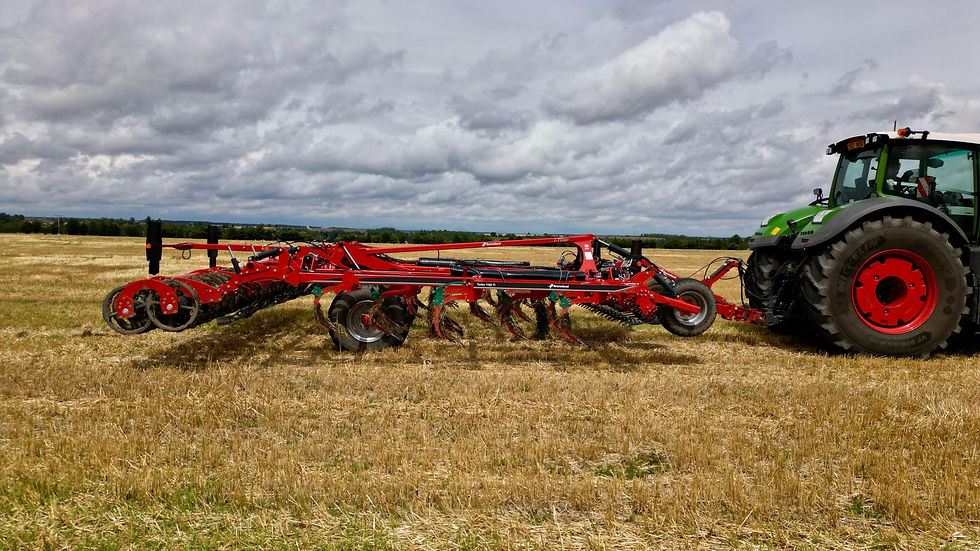Variable rate tillage
- Josef Chára
- Aug 3
- 2 min read
Last week, in cooperation with Kverneland, we were the first in the Czech Republic to test the Kverneland Turbo 1165 i-Tiller tine cultivator - one of the first "smart" machines enabling variable soil cultivation.
Variable tillage is an approach based on the principles of precision agriculture, which aims to optimize the intensity of tillage according to spatially varying soil conditions within a single plot. This approach brings more efficient use of energy or, for example, better incorporation of post-harvest residues, as in our case.
Fig. 1 Kverneland Turbo 1165 i-Tiller allowing variable working depth adjustment.

The Kverneland Turbo 1165 i-Tiller currently operates on prescription maps created in the Cropwise Operations system . As this is the first tillage operation after harvest, the prescription map is based on yield data – higher yield means more residue and therefore the need for deeper tillage for better incorporation and mixing with the soil.
Before creating the prescription map, the yield map is first cleaned of extreme and erroneous values. The degree of variability and the level of resolution of the map are then set. In practice, the option where only variable deepening occurs in places with higher yields has proven to be the most successful. The minimum processing depth is set at 6 cm (e.g. at a yield of 4 t/ha) and with each additional ton of yield, the depth increases by 1 cm.
At the same time as the stubble cultivation, we are also starting to measure harvested land using a digital penetrometer, which will allow us to specifically identify compacted areas and, in the subsequent phase, effectively disrupt them, for example, using a chisel plow with passive share blades.
Video 1. Visualization of individual layers of soil compaction in Cropwise Operations.
Customer feedback so far has been overwhelmingly positive. Users appreciate the clear and interactive Cropwise Operations interface, which, in conjunction with the digital penetrometer, allows for detailed analysis of soil compaction down to the centimeter. Also worth noting is the intuitive operation of the Kverneland Turbo 1165 i-Tiller itself, which is fully ISOBUS compatible and can be easily integrated into various types of terminals.
Although variable tillage may be viewed with skepticism at first, the high-quality incorporation of post-harvest residues forms the essential basis for all subsequent agrotechnical operations. It is also important to remember that every 1 cm of tillage depth means approximately 1 liter of diesel per hectare – and it is precisely the variable approach that allows these costs to be optimized in a targeted manner.
We will be using the Kverneland Turbo 1165 i-Tiller throughout the season and I am personally very curious about the results and interest from farmers. I was also rather skeptical about this technology at first, but my first experiences convince me of its meaningful application. However, I consider the fundamental benefit of variable tillage technology to be its use in deeper soil cultivation, especially in targeted subsoil destruction, where precise targeting of intervention to specific problem areas in the soil profile is desirable. What is your view on variable tillage? Are our services and work interesting to you, or are you interested in cooperation? Write to me.


